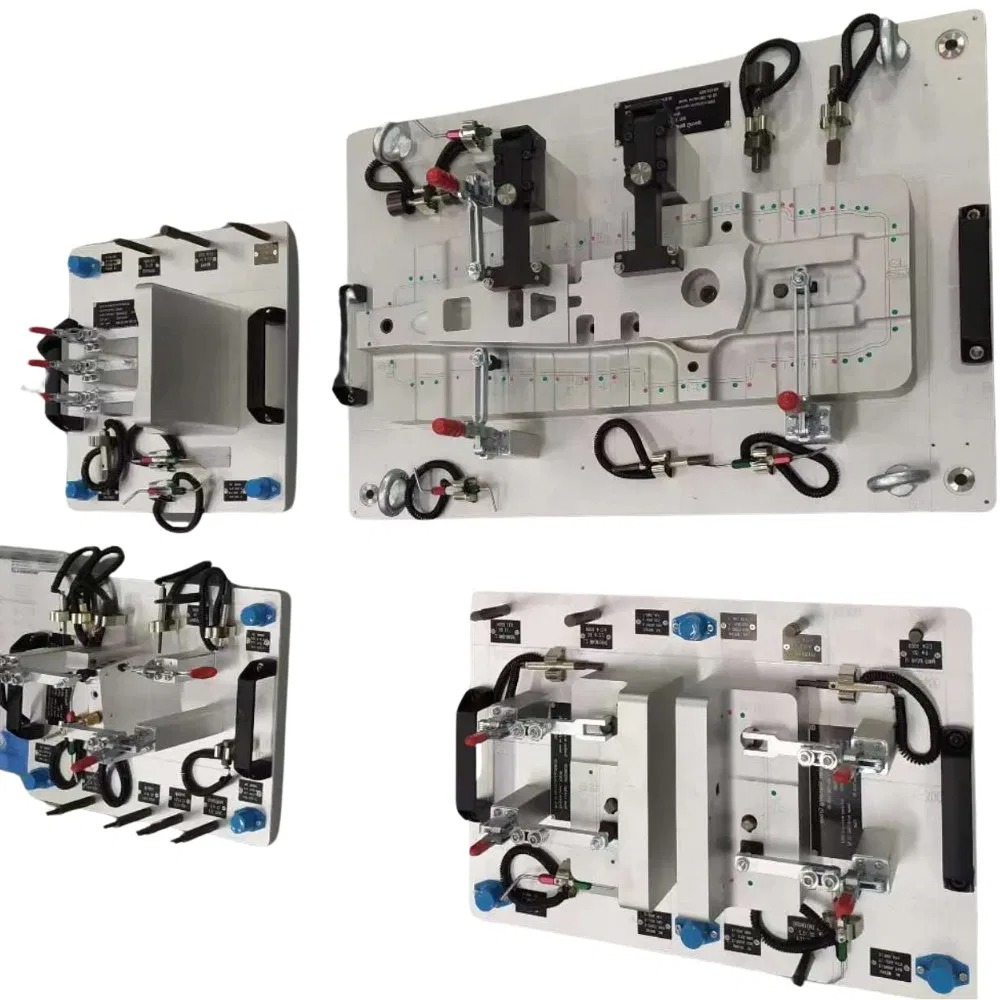Phone:
+86 13828 600940
Physical address:
No.8Liyuan Road, Bogang community, Shajing Street Baoan District, Shenzhen, China

Precision manufacturing demands accurate measurement. In industries as critical as aerospace or automotive production, accuracy in measurements can make all the difference between success and costly errors. That is why CMM fixtures–an essential part of coordinate measuring machines–are so valuable: these fixtures secure workpieces during inspection and measurement processes without incident, helping ensure every detail of every process are captured flawlessly.
But, exactly, is a CMM fixture and what are their advantages for improving workflow? In this guide we explore different kinds of CMM fixtures along with their benefits, best practices for use, potential pitfalls to watch out for and tips to optimize setups. Get ready to explore this fascinating world and unlock greater precision within your operations!

CMM fixtures come in various forms to meet different measurement needs. A common form is dedicated fixtures which hold just a single part or design for maximum precision and repeatability.
Modular fixture systems have long been an attractive solution, giving users the ability to adapt components based on specific parts or projects. Their flexibility makes them the ideal solution for environments with varied production lines.
Universal fixtures provide greater versatility by accommodating a range of geometries without extensive modification, yet may lose precision compared to dedicated setups.
Specialized fixtures can provide customized measurements on complex or large-scale components. Their designs often incorporate advanced materials or custom builds for optimal measurement performance during measurements, with each type offering its own set of advantages to best meet varying manufacturing scenarios.

CMM fixtures play a critical role in improving measurement accuracy by securely holding parts in place, eliminating movement during inspection and providing steady readings.
Time efficiency is another major advantage of well-designed fixtures; operators can rapidly set up or switch out workpieces, thus cutting downtime and increasing productivity on the shop floor.
Additionally, CMM fixtures promote repeatability. When measurements are conducted under identical conditions, their results remain reliable over time.
Cost savings also play an integral part of production efficiency, since accurate measurements help minimize errors and waste, leading to improved resource use. Investment in quality fixtures saves both money and effort in terms of reduced rework or scrapped material expenses.
These tools enhance safety within the workspace by creating secure fixture setups, which reduce risks related to unstable components during measurement tasks and decrease accidents that might otherwise arise due to unstable parts.

Selecting an effective CMM fixture can significantly increase measurement accuracy. Begin by understanding your unique measurement needs; consider part geometry and size when making this selection as this impacts fixture design.
Choose modular fixtures when flexibility is of utmost importance, as these allow quick adjustments for different components, saving both time and effort during setup. Be sure that materials used for manufacturing are sturdy yet lightweight in order to facilitate handling and transport without strain or difficulty.
When using fixtures, ensure a systematic approach is used in aligning parts. Securement ensures a reduction of part movement during measurements for consistent results.
Maintaining fixtures on a regular basis is also key; inspect fixtures periodically for wear or damage and maintain it regularly to ensure reliable long-term performance.
Training staff on best practices cannot be overlooked. Equip them with knowledge on proper usage and troubleshooting methods for issues likely to arise in operation.
Neglecting calibration can be costly. Without accurate fixture calibration, measurement results could become misleading and lead to inaccurate readings from your CMM or its fixtures. Always ensure they’re correctly aligned for precision!
Mistaking environmental conditions as immaterial is another risk. Temperature and humidity fluctuations may wreak havoc with precision measurements; ensure your workspace maintains stable environments to reduce any discrepancies in measurements.
Use of an inappropriate fixture can result in errors as every component has specific needs; selecting an incompatible fixture compromises quality control.

Failing to perform regular maintenance on fixtures may lead to wear or contamination, reducing their lifespan over time and keeping measurements accurate over time. Regular servicing helps extend that lifetime as well.
Start by understanding your part being measured; this knowledge will assist with selecting fixtures and supports to maintain stability during measurement processes.
Make sure that the design of your fixture incorporates all necessary features of the part being produced, to minimize setup time and enhance accuracy. A thoughtful arrangement reduces setup time significantly while increasing accuracy significantly.
Consider modular fixtures when possible as they allow greater adaptability when accommodating various parts without extensive redesigns.
Make sure that alignment is accurate; aligning components properly leads to more reliable results and shortens rework times significantly.
Regular inspection is key to maintaining precision over time. Maintaining both fixtures and measuring equipment should be undertaken regularly for signs of wear or damage to ensure accurate performance over time.
Engaging team members in continuous improvement discussions can yield innovative adjustments that lead to innovative changes to how setups are approached, creating an atmosphere of excellence in your workplace.

CMM fixtures play a pivotal role in increasing the efficiency and accuracy of coordinate measuring machines (CMM). Their diverse types meet various measurement needs in manufacturing and quality control environments. By understanding their advantages–like increased precision and reduced setup time–businesses can make significant strides forward with their operations.
Finding an appropriate CMM fixture requires considering all relevant specifications carefully, while employing best practices ensure that these tools are used efficiently while avoiding mistakes leads to better outcomes. Furthermore, optimizing your setup could produce significant speed and accuracy improvements – an added advantage compared to standard fixtures!
Knowledge about CMM fixtures equips organizations to make sound decisions that improve productivity and quality standards, driving productivity forward while meeting quality benchmarks. As technology develops further, keeping up-to-date will only enhance how these essential tools for precision measurement tasks are being utilized by us all.